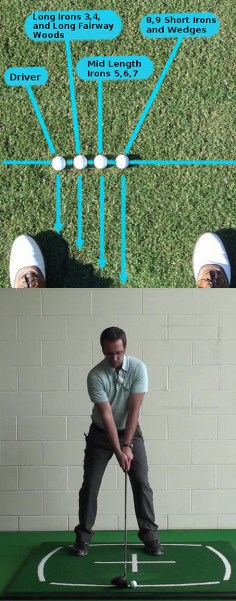You're Correct!
 A lot of players enjoy the “hit it high, let it fly” approach to the driver but low ball flights can be fantastic for those windy days and especially for links golf players because they can produce a strong, penetrating ball flight unaffected by the wind with a lot of roll upon landing.
A lot of players enjoy the “hit it high, let it fly” approach to the driver but low ball flights can be fantastic for those windy days and especially for links golf players because they can produce a strong, penetrating ball flight unaffected by the wind with a lot of roll upon landing.
The low ball flight shot is useful in adverse weather conditions, however for those golfers who frequent parkland courses or those who play on undulating fairways, the low ball flight can lose a lot of distance due to the ball landing too early.
A player with a low ball flight means that at impact their launch angle is not high enough to get the ball high enough into the air, and there are many aspects of the swing that can cause this. Like all faults in the swing, the set up needs to be the first port of call for any golfer looking to improve an area of concern.
The ball position with each club varies a little in order to help create the correct trajectory with each club. For example, a 9 iron is positioned in the middle of a players stance to encourage a steep angle of attack and the loft of the club will create the right launch angle.
A driver should be positioned just inside the players left heel. This encourages the swing to get to the bottom of its arc and then hit the ball on the way back up in order to increase the launch angle. This also allows the club to release in time to square the club face to the target.
A player hitting the driver too low should focus on ball flight because if the ball is too far back in the stance then it is being struck at the wrong time during the swing, potentially reducing the launch angle to less than the clubs actual loft.
Sorry Try Again! - See Explanation Below
If the ball is positioned too far forward in the stance, it will go left due to the wrists over releasing or go too high due to the launch angle being further increased. If the player is too extreme and doesnt transfer their weight correctly, the ball could even be out of reach and topped off the tee.
Sorry Try Again! - See Explanation Below
If the shaft of a golf club is too flexible, this will cause the ball to go too high due to the club scooping through the impact zone and adding loft to the shot. If a shaft is too stiff, the ball will tend to go too low. This is what makes custom fitting so vital.
Sorry Try Again! - See Explanation Below
If a players weight does not transition correctly and the weight remains on the back foot through impact then the launch angle at impact will increase causing a high, less penetrating flight, sacrificing distance and even being hugely affected by the elements such as the wind.







